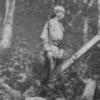Ima bre toliko toga na netu.
Agathis
Agathis is a 'poor man's mahogany', related to the pine family of woods and grown in many asian countries. It's cheap, easy to use and gives consistent and stable results, so it is often used in less expensive instruments. The best way to describe the tone is similar to mahogany, but is more bland sounding with a less complex sound.
Alder
Alder is a standard body wood for solid body guitars and and basses, and is one of the most popular because of its light weight, balanced tonal response and good resonance. It is light in weight (a Strat body will weigh approximately 4lbs), and has soft, tight pores similar to basswood, but with a bold harder grain pattern, similar to ash, but less pronounced. The harder grain adds to the stiffness, making it more robust than basswood. The colour is medium light tan with a slight pinkish tint. Overall, it is darker than ash, but the grain lines are less distinct. Alder has a balanced tone, without much accentuation in any area, aside from a slightly pronounced upper midrange - which helps with clarity. It is fairly resonant and complex, with a good dynamic range. While it is known for great Blues and Rock tones, it is very flexible, making for a very adaptable guitar that can fit most musical styles.
Ash
There are two different species of Ash used for guitar building: Northern Hard Ash and Swamp Ash.
"Southern Soft" or "Swamp Ash":
Swamp Ash comes from swamps in the Southern USA. While the tree grows, large parts are submerged underwater for years, resulting in a porous lightweight wood. Many of the Fender guitars from the 1950's were made of Swamp Ash. Swamp Ash has an open pore structure with hard grain lines between softer layers. It is a fairly light weight wood (which helps distinguish it from Hard Ash), with a Strat body normally weighing under 5 lbs. The grain is open and is creamy light tan in color with bold, darker grain patterns. It is a very musical wood offering a very nice balance of brightness and warmth with a lot of dynamic range. It has clear, bell-like highs, slightly scooped but very complex mids, and strong tight lows. The mid frequencies vary quite a lot from piece to piece, which will vary the sound per guitar more than most woods. It has a very quick attack when striking the strings and is very dynamic. It is very resonant across the whole frequency spectrum, so it very detailed and complex when played clean to slightly driven.
Northern Hard Ash: Northern hard ash (also sometimes called "bassball bat" ash) is similar to swamp ash, but is relatively hard, heavy and dense, with a Strat body normally weighing 5 lbs or more. The density makes it brighter sounding, and gives it a longer sustain.
Australian blackwood (or black acacia)
Australian blackwood is the Australian cousin of the Hawaiian wood koa, and is identical in every respect. Tonally similar to mahogany. (See Koa)
Basswood
Basswood is a very lightweight, closed-grain wood with a consistent and tight grain pattern. The colour is whitish through yellow to tan, but sometimes has unattractive green mineral streaks. Better quality examples will be darker tan and consistent in colour throughout, but it is not a good looking wood for clear finishes. Basswood is a very soft wood which dents easily - this need not be a problem as harder finishes such as polyester are usually used to counter this. However, due to the softness, screw holes have a tendency to strip if overtightened. There also needs to be a reasonable amount of wood in front of the anchors of a two-stud tremolo system to prevent the wood from cracking and/or the studs from leaning forwards with extreme tremolo use. On the upside, the softness means it’s easy on tools and easy to cut, sand and finish. The softness of the Basswood attenuates both the high and extreme low frequencies. This gives it a pronounced midrange fundamental frequency response. Unlike Ash and alder, the tonal response is not particularly complex and the dynamic range is relatively limited. The reduced and smoother high end response helps offset the treble accentuation of floating tremolos and locking nuts. All together, this gives it an "up-front" tone, suitable for Metal and Rock music styles as well as for distorted lead tones, while clean sounds tend to be more sterile, somewhat lacking in character.
Bubinga
A very heavy, strong, stiff wood used primarily as an electric bass body and neck wood. For electric guitars, it is best suited for laminate tops because of the weight. It has a nice reddish brown color and sometimes has a 'bees-wing' figure, which gives it a nice 3D shimmer.
Cocobolo
Cocobolo is a rosewood species which is grown in Mexico. Among the heaviest of the rosewoods, it has similar sonic characteristics and a particularly striking grain. Unfortunately it is not often used, as the dust from cutting and sanding this wood causes allergic reactions and it can be very difficult to glue.
Koa
Koa is an exotic medium to heavy weight wood grown exclusively in the Hawaiian Islands. It is the traditional wood for ukeleles and high-end acoustic guitar back and sides. It is a sigularly beautiful wood with a light, honey-brown color. Figured koa has more 3D 'depth' than any other wood. It is becoming increasingly difficult to find good quality and is fast becoming one of the most expensive tonewoods - with prices often on a par with Brazilian rosewood. Koa has warmth and sustain similar to Mahogany, but is denser, so is a bit brighter with less low end. Like rosewood, it’s an oilier wood, and this dampens the high frequencies a bit, but less so than rosewood. Overall, the sound is pronounced in the midrange, treble response is smooth and compressed and the low end is clear but reduced. This produces a strong fundamental tone which is less dynamic and more compressed than most, but a good sweet sound - especially when played hard. It is a popular wood for electric guitars with 'hollow body' resonant chambers as this type of construction adds some low end, increases both resonance and dynamics as well as reducing the body's weight.
Korina (Limba)
The grain pattern and tone is similar to Mahogany, although it is not quite as dense. It was the original wood used for many classic Gibson guitars such as the original Explorer and Flying V. It has all the good tonal properties of mahogany, but is more responsive with a sweeter sounding midrange. There are two variants of Korina, white and black. Black Korina is a medium weight wood, which is olive in color with black streaking. White Korina is a medium to heavy weight wood. The colour a light yellow/green.
Lacewood
Lacewood is a medium weight wood from Australia. A true multi-density wood, it has a 'snakeskin' like look, with a hard dark reddish-brown grain surrounding softer, lighter coloured wood. Like maple, it is often used as a laminate top over softer woods, for it's striking appearance. The tone is similar to Alder, but brighter overall. The low frequencies are tight, with some complexity in the midrange and a bright high frequency response.
Mahogany
Mahogany has a fine, open grain with large pores, similar to ash, but with a more even grain pattern and density. It is denser and heavier than Alder (a Strat body will usually weigh over 5lbs), but lighter than Maple. The colour is reddish brown, better examples often have a golden 'sparkle' under a clear finish. The low frequencies are good, the midrange is compressed with prominent low mids and less upper midrange and smooth sounding highs. Overall, the tone is warm, full and thick with a slight nasal quality. Dynamically, it is punchy and has excellent sustain. In a solid body, it is well suited for punchy rock music, in a hollowbody it has all the warmth needed for jazz. It is often mated with a maple top or neck to add some high end and some articulation. Of particular note is that good mahogany often ages really well, becoming better sounding every year. It is also an extremely stable wood (particularly the now rare Honduran mahogany), with less chance of warping over time than most other species.
Maple
There are two types of Maple: Eastern Hard Maple (hard rock maple) and Western Soft Maple (big leaf maple). The colour is white with tight pores and thin grain lines. Soft maple often has intense figuring. Maple is well known for imparting bright tone to an instrument, with excellent separation (which allows each note of a chord to sound distinct, without blurring together).
Hard Maple (Eastern, hard rock or sugar maple): Hard Maple is a very hard, heavy and dense wood which is more often used for necks than bodies due to the weight. It is a brighter sounding wood, with very strong highs and upper midrange. While the bass frequencies are quieter, they are very articulate and with the right pickups and amp settings can be wonderful. Overall, maple has a very long sustain. It is a particular sound which is well suited to certain styles of hard rock and heavy metal or for a very articulate bass.
Soft Maple: It is usually much lighter weight than Hard Maple but it features the same white color. It has bright tone with good bite and attack, but is not as brittle as hard maple or other harder woods can be, and produces singing highs with a tight low end.
See Images Below Figured maple Maple with figuring is preferred over plain maple, but the figure has no real bearing on the sound of the wood. The figure is, however, strikingly beautiful. Most common are curly maple (A.K.A. flame, fiddleback or tiger maple), quilted maple (with a billowy, bubbly appearance) and birdseye maple ("the one with the spots" as a wood "specialist" once told me!). Less common are burly maple, spalted maple and wild maple.
Flame Maple
Flame, curly, fiddleback or tiger maple all generally refer to stripes. Flame can be tight, wide, straight or crooked.
Quilted Maple
Quilted maple is distinguished by its billowing "cloud" or "bubbly" appearance. This figure can vary from large, wide billows to tight small blisters.
Birdseye Maple
This figure is only found in the eastern hard maple trees. Birdseye does not usually run deep in the boards, so solid bodies are not available. As a bookmatched top it can be quite striking.
Spalted Maple
This wood is actually the product of a dead or decaying tree which hasbeen attacked by fungi. This wood is soft and is only used as a laminate top on flat top bodies, usually with binding. Each piece is quite unique in look and it can look wonderful with a tobacco burst finish.
Burl Maple
This is a very busy looking wood usually with a lot of porosity and bark inclusions which looks best finished in a natural clear gloss.
Wild maple
Wild maple can be stunning, consisting of irregular figuring which is never the same from piece to piece.
No Image Nato Nato is a South American hard wood, similar to mahogany and was used as a cheap mahogany substitute for entry level instruments until agathis gained in popularity. Not really a great tonewood and is really only a step up from cheap ply or composite wood.
Padouk
Brilliant purple-red or orange color which oxidizes to a warm brown over time. The grain is open, similar to rosewood. It has a waxy feeling and feels good to play on. Tonally it is bright, having a similar tone to maple. While it is sometimes used for complete bodies, it is more likely to be found as laminate strips.
Poplar Poplar is another common body wood which has been used by many manufacturers in the past, including Fender. It is a closed grain wood with a a greyish-green colour. It is very similar to alder in weight and tone, but is not as popular due to the colour. Overall, a good choice for a inexpensive guitar which needs to cover a range of playing styles.
Redwood
Redwood is a hard, dense pinkish wood which is sometimes used for laminated tops. It has a tone similar to maple, but slightly warmer and more resonant. It sometimes shows dramatic figuring.
Rosewood
Although it is more often used as a fingerboard wood, rosewood is sometimes used for electric guitar bodies. It is the heaviest tonewood, and a rosewood Strat body will always weigh in at 6lbs or more. It is a beautiful, dark brown wood, often with reddish, purple or orange streaks running through it. It is an extremely dense, stable wood. It is and resonant across the entire frequency range, but has a high oil content, which serves to dampen the high frequencies, making it one of the warmest sounding woods available. Guitars made of rosewood often have a pronounced and dark reverb-like resonance.
Sen
Sen is sometimes called sen ash, but is not related to ash at all, but is rather a member of the ivy family. It is an Asian wood which looks a lot like ash, but is tonally similar to poplar and is often used for inexpensive Fender style bodies.
Spruce Spruce is best known as the main acoustic guitar top wood. It is a very soft and lightweight wood, but is extremely stiff for its density. Like ash, it's a multi-density wood, with a hard grain and soft wood in between. The colour is creamy white. It has a broad frequency response even wider than alder - possibly the widest of any electric guitar tonewood - with a very strong midrange resonance. The softness of spruce means that it must be covered with an extremely hard finish to protect the wood from damage. It is sometimes as a laminate to give life to tonewoods with a more compressed sound.
Walnut
Walnut is a dense medium hard wood which has a strong grain pattern similar to ash, but it has a constant density more like mahogany. It is harder, heavier and more dense than Mahogany, closer to maple. Tonally, it is warm with solid, snappy low end, the midrange is a lot more complex than mahogany (more like alder) and the top end is quite bright, but very smooth. It is a heavier wood which weighs approximately 5.5lbs or more as a Strat body. Walnut often has quite dramatic figuring.
Wenge
Wenge is an african hardwood which features black and chocolate brown stripes, similar in appearance and tone to Zebrawood, but much darker in colour.
Zebrawood
This is another heavy weight wood with very open grain. It has a distinctive look with light and dark brown stripes. Due to the weight, it is more commonly used as a laminate top than as a complete body. Its weight and sound are similar to hard maple.
Ziricote
Ziricote is grayish brown in color and features intense spider-web and 3D figuring. It is a high density oily wood, which makes it sound and feel similar to rosewood. It is also a heavy weight wood, so is more often used for laminated tops, rarely for complete bodies.
Tol'ko na tu vec stoputa prezvakanu temu. Kako rekoh, milion linkova na netu. Samo ukucas 'tonewoods' ili sto bi nas narod preveo u slobodnom smislu 'drva koja se koriste za izradu muzickih instrumenata ciji je zadatak da zvuche' (tone wood, jel'da).




